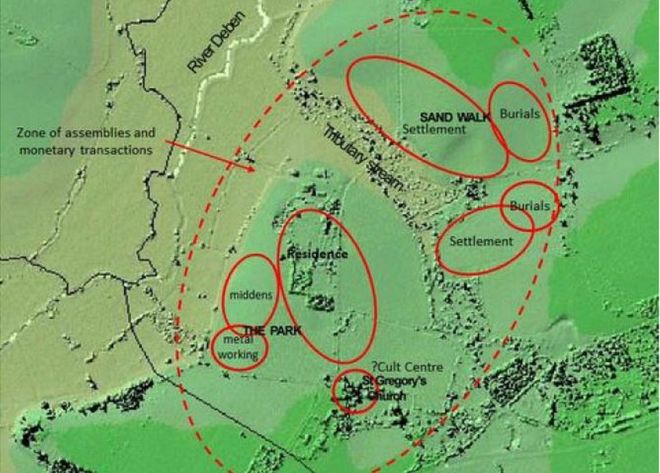During the early stages of Anglo-Saxon settlement only coastal extraction appears to have been practised.
Actually nothing appears to have been practised during the early A/S period. According to the bafflingly absent archaeology.
At this time the sea level was rising, as the Roman coastal defences eroded.
Good Lord, has global warming started already? I assume the rising sea-level is eroding the Roman defences not the other way round as this syntax suggests.
As a result extraction sites moved back as the coastline altered, then in time returned to sites nearer our present coastline, as defences were gradually rebuilt.
Aha! Global warming has stopped. Why have the Anglo-Saxons rebulit the defences if they've got a nice little salt business where their coastline already is?
As this happened huge amounts of peat were extracted, creating the area known now as the Norfolk Broads, and this peat was utilised to provide the fuel necessary for evaporation of Common salt out of solution.
This is worth investigating. I just read yesterday that a famous Southern Railway train designer, miffed when his beloved company was nationalised in 1948, went off to Ireland and designed them an engine that ran on peat. Only one was built.
Coastal saline solution is far less pure and less concentrated than that found inland.
So why bother? Just use the inland stuff.
Sites on coastal areas are found near woodland sites,
Not peat then.
and the Doomsday record indicates 64 salt producing villages in Norfolk. In Lincolnshire and Sussex there are 34 villages with multiple salt pans. Giving an estimated total of 360 salinae in the eastern coastal counties ... and hundreds more across Essex as a whole.
I think that's the whole of south-eastern England covered. Except Kent. Worth wondering why not.
But like so many good things, saltmaking was taxed and, eventually, taxed almost out of existence.
Governments aren't generally stupid enough to tax anything out of existence (unless they actually want it out of existence for some other reason) but people going out of business quite often claim it's the government (or whoever) when the actual reason is they just can't compete with newer cheaper producers elsewhere. My guess would be Cheshire salt mines but it really would be a guess.


